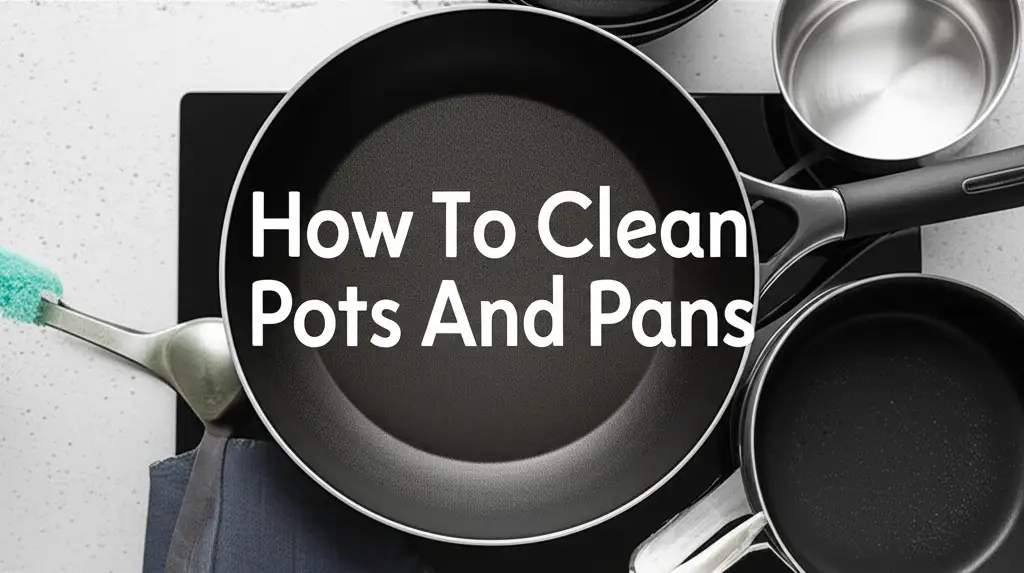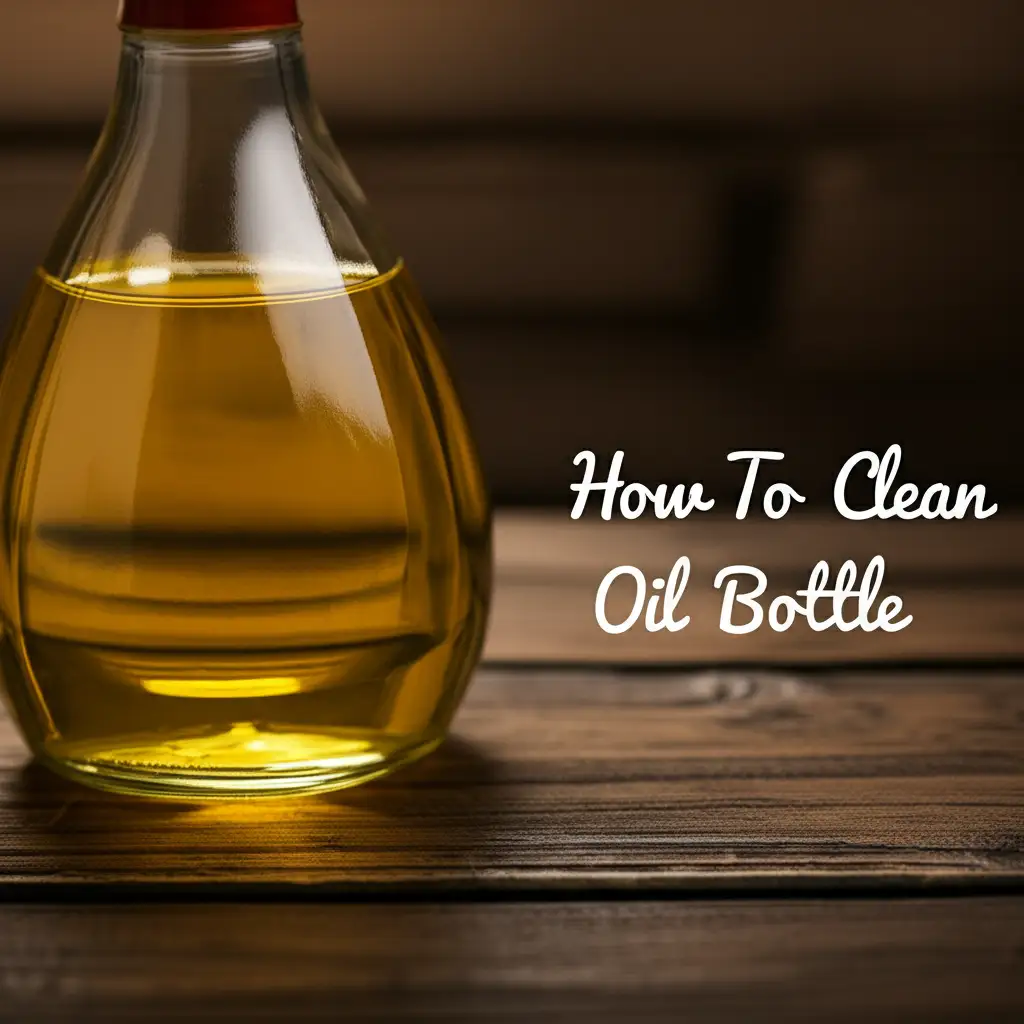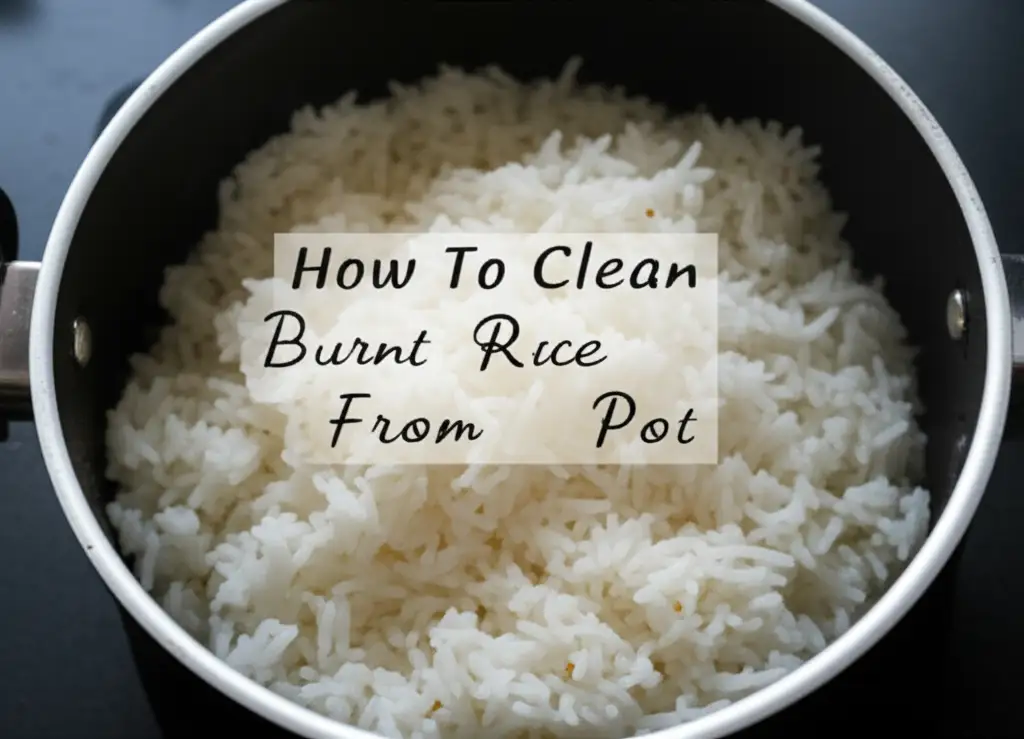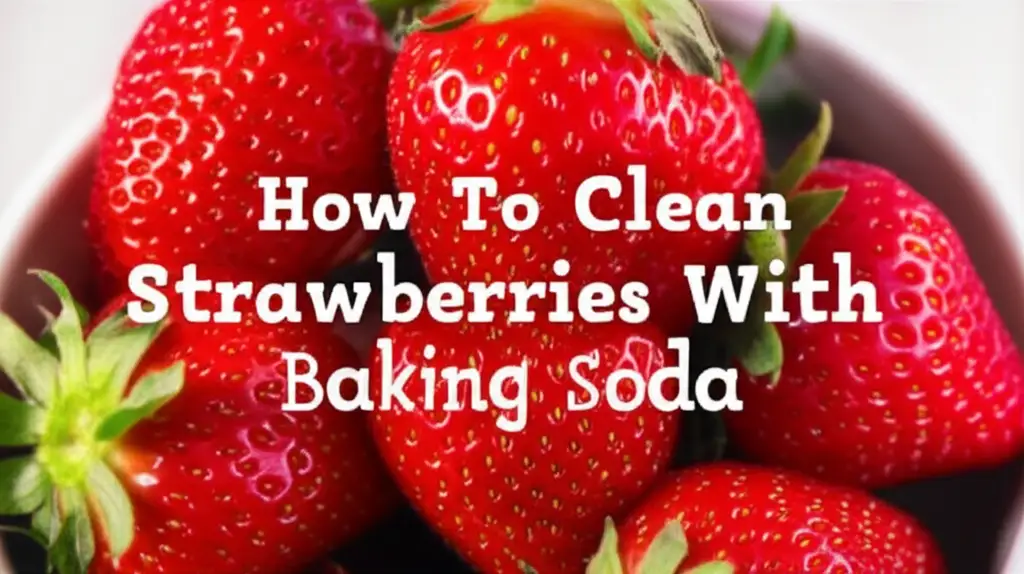· Kitchen Cleaning · 10 min read
How To Clean Pots With Baking Soda
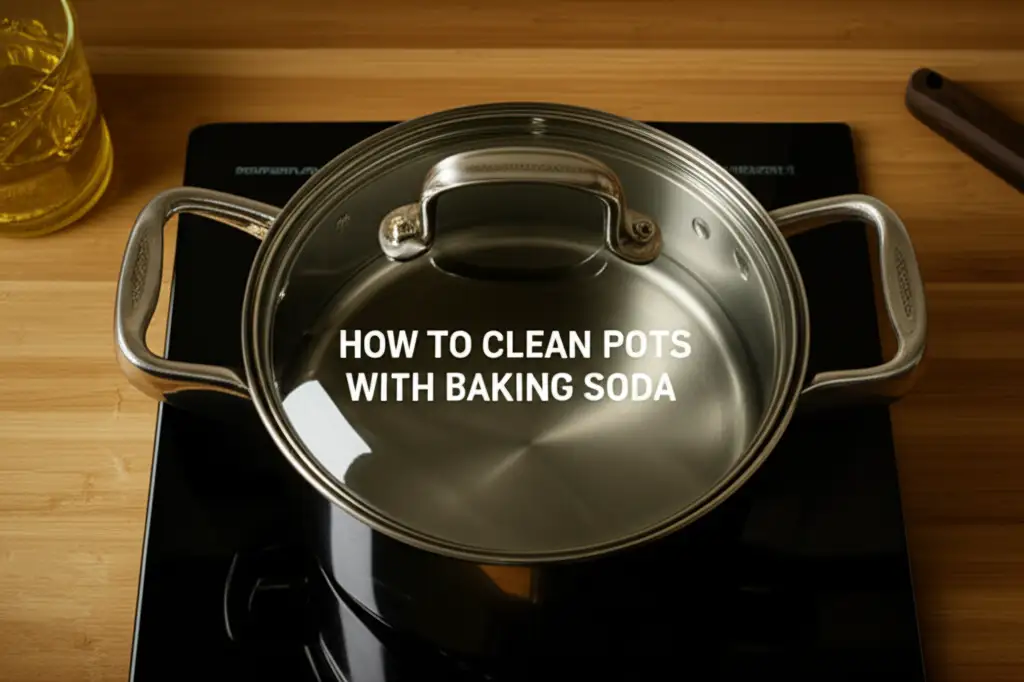
Sparkling Pots: How To Clean Pots With Baking Soda
Do you look at your pots and sigh? Burnt-on food, stubborn grease, and unsightly stains often cling to our favorite cooking companions. Traditional scrubbing can feel like a losing battle. But what if there was a simple, natural solution hiding in your pantry?
You can transform your kitchenware with a humble box of baking soda. This article will show you how to clean pots with baking soda. It is a powerful, eco-friendly cleaner. We will explore various techniques, from tackling tough burnt spots to bringing back shine. Get ready to rediscover the joy of sparkling clean pots.
Takeaway:
- Baking soda easily cleans many pot types.
- It removes burnt food and tough stains.
- You can use it as a paste or a soaking agent.
- Baking soda is a safe, natural cleaning choice.
Baking soda cleans pots effectively by reacting with acidic food residues and grease. Its gentle abrasive texture helps lift stubborn grime without scratching surfaces. You can create a paste with water or use it in boiling water for soaking. This method makes cleaning easier and more eco-friendly.
Why Baking Soda is a Pot-Cleaning Powerhouse
Baking soda, or sodium bicarbonate, is a true marvel in your kitchen. It is an alkaline compound. This means it can neutralize acidic stains and odors. Think about all those burnt food bits or lingering smells in your pots. Baking soda tackles them head-on.
Its mild abrasive texture helps scrub away tough grime. It does this without damaging your pots. Unlike harsh chemical cleaners, baking soda is non-toxic. It is safe for you and your family. Plus, it is very affordable.
Using baking soda for cleaning is a smart choice. You avoid harsh fumes and chemical residues. Your pots become clean and safe for cooking. This natural cleaner works wonders.
Essential Tools and Preparations for Cleaning Pots
Before you begin cleaning your pots, gather your materials. Having everything ready makes the process smooth. You will need a few simple items. Most are probably already in your home.
This includes your box of baking soda. You will also need dish soap. A sponge or non-abrasive scrubber is important. Warm water is always helpful. For tougher jobs, you might want a plastic scraper. This avoids scratching your pot surface.
It is a good idea to remove any loose food first. Scrape off large pieces. This helps the baking soda work better. Protect your hands with gloves if you wish. This keeps your skin from drying out.
What You Will Need
- Baking soda
- Dish soap
- Warm water
- Non-abrasive sponge or scrubber
- Optional: Plastic scraper, rubber gloves, white vinegar
Step-by-Step Guide to Cleaning General Pot Stains
Many pots gather everyday cooking stains. These are usually easy to remove with baking soda. This method works well for light discoloration or sticky residues. It is a gentle yet effective approach.
First, rinse your pot with warm water. Sprinkle a generous amount of baking soda on the stained areas. Add a few drops of dish soap. Use a damp sponge or scrubber. Gently rub the affected surfaces.
The baking soda acts as a mild abrasive. It lifts the grime. The soap helps cut through grease. Continue scrubbing until the stains disappear. Rinse your pot thoroughly with warm water. Your pot should look much better now.
Tackling Burnt Food in Pots with Baking Soda
Burnt food is a common kitchen disaster. It can feel impossible to remove. But baking soda is a hero for this challenge. It helps lift even the most stubborn, charred bits.
First, fill the bottom of the burnt pot with water. Add a generous amount of baking soda to the water. I usually add about 1/4 to 1/2 cup, depending on the pot size. Bring the water to a gentle boil on the stove. Let it simmer for 10-15 minutes.
The boiling water softens the burnt residue. The baking soda helps break it down. After simmering, let the pot cool. Scrape away the loosened food with a plastic scraper. You can also use a non-abrasive sponge. For very tough spots, make a paste. Mix baking soda with a little water. Apply it to the stubborn areas. Let it sit for a while, then scrub. This method also works well for burnt food on baking sheets. You can learn more about how to clean a burnt non-stick baking sheet using similar principles.
Deep Cleaning Pots with Baking Soda and Vinegar
Sometimes, pots need extra power. Combining baking soda with vinegar creates a powerful fizzing reaction. This can tackle really tough stains and grime. It’s especially effective for burnt-on food or lingering odors.
First, sprinkle a thick layer of baking soda over the bottom of your pot. Make sure it covers all the stained areas. Next, pour white vinegar directly over the baking soda. You will see it immediately fizz and bubble. This reaction is what helps lift the grime.
Let the mixture sit for at least 30 minutes. For very stubborn stains, let it sit for a few hours or even overnight. After soaking, pour out the liquid. Scrub the pot with a non-abrasive sponge. The residue should come off much easier. Rinse well. This powerful combination is also fantastic for other household cleaning tasks, like learning how to clean with vinegar and baking soda in general. It even works wonders for large appliances; for instance, you can try cleaning your dishwasher with vinegar and baking soda to remove grime and odors.
Specific Pot Materials and Baking Soda Cleaning
Baking soda is versatile. It works on many pot materials. However, each material might need a slightly different approach. Knowing these nuances helps you clean effectively without damage.
Stainless Steel Pots
Stainless steel pots love baking soda. For everyday cleaning, a paste of baking soda and water works wonders. Apply, scrub, and rinse. For stubborn stains, especially heat tints or discoloration, sprinkle dry baking soda. Add a bit of water to make a slurry. Scrub with the grain of the steel. This helps remove discoloration and restores shine. You can find more specific tips on how to clean stainless steel pans with baking soda.
Non-Stick Pots
Use baking soda gently on non-stick surfaces. A paste can be too abrasive if scrubbed too hard. Instead, sprinkle baking soda into the pot. Fill it with water and bring it to a boil. Let it simmer for 5-10 minutes. This softens burnt food. Then, gently wipe with a soft sponge. Never use harsh scrubbers or metal tools.
Cast Iron Pots
Cast iron pots need care. They can rust. For cleaning, sprinkle baking soda over any stubborn spots. Add a little water to make a paste. Scrub gently with a non-abrasive brush or sponge. Rinse quickly. Make sure to dry cast iron immediately and thoroughly. Re-season if needed after cleaning.
Copper Pots
Copper pots can tarnish. Baking soda and lemon juice or vinegar make a great cleaner. Mix equal parts baking soda and lemon juice (or vinegar) to form a paste. Apply it to the copper surface. Let it sit for a few minutes. Gently rub with a soft cloth. This removes tarnish and brings back the shine. Rinse thoroughly and dry completely. Baking soda also effectively cleans other metallic items, such as for removing tarnish from silverware.
Maintaining Clean Pots and Preventing Stains
Cleaning is one part of the equation. Maintaining your pots keeps them looking new. It also makes future cleaning much easier. Simple habits go a long way in preventing stubborn stains and buildup.
Always clean your pots soon after use. Do not let food sit and dry onto the surface. This creates much harder stains. Soaking a dirty pot in warm, soapy water immediately helps. This loosens food particles.
Consider the heat you use for cooking. High heat can cause food to burn more easily. It also creates heat stains on stainless steel. Adjust your cooking temperatures as needed. Using the right tools also helps. Avoid metal utensils on non-stick surfaces. This prevents scratches.
Regular deep cleaning helps too. Even if your pots look clean, a monthly baking soda treatment can refresh them. This prevents minor buildups from becoming major problems. Baking soda also works well for other kitchen appliances, like when you need to clean your coffee maker with baking soda to remove mineral deposits and old coffee residue. Taking these steps extends the life and beauty of your cookware.
When to Avoid Baking Soda on Pots
While baking soda is fantastic, it’s not always the best choice. Some materials can be damaged by its abrasive nature or alkaline properties. Knowing these exceptions protects your cookware.
Avoid using baking soda on aluminum pots, especially anodized aluminum. Baking soda can cause discoloration or pitting on these surfaces. It might leave dark spots or dull the finish. For aluminum, stick to dish soap and water.
Also, be careful with extremely delicate or antique cookware. This includes some very old, thin-gauge copper or certain decorative enamels. Test a small, hidden area first. If you see any adverse reaction, stop using it. Always use gentle scrubbing tools. Never use steel wool with baking soda on any pot. Steel wool can scratch surfaces and remove protective layers.
FAQ Section
How long should I let baking soda sit on burnt food?
For burnt food, let baking soda and water simmer in the pot for 10-15 minutes. After boiling, let it cool for at least 30 minutes, or even a few hours. This gives the baking soda time to break down the burnt residue effectively before you start scrubbing.
Can baking soda remove scratches from pots?
No, baking soda cannot remove scratches from pots. It is a cleaning agent that helps remove stains and grime. Scratches are physical damage to the pot’s surface. Once a pot is scratched, baking soda will not repair it.
Is baking soda safe for all types of pots?
Baking soda is safe for most pot types, including stainless steel, glass, and ceramic. Be gentle on non-stick coatings and avoid it on anodized aluminum, as it can cause discoloration. Always use non-abrasive scrubbers.
Can baking soda remove food odors from pots?
Yes, baking soda is excellent at absorbing and neutralizing food odors. After cleaning, you can sprinkle dry baking soda in the pot and let it sit overnight. Then, rinse it out. This helps eliminate lingering smells effectively.
What is the best way to clean outside of pots with baking soda?
To clean the outside of pots, make a paste with baking soda and a little water. Apply it to the exterior, especially on greasy or stained areas. Let it sit for 15-30 minutes. Scrub with a damp sponge or cloth, then rinse thoroughly.
How often should I clean my pots with baking soda?
You can use baking soda for general cleaning as needed. For burnt food, use it immediately. For deep cleaning or stubborn stains, a monthly or quarterly baking soda treatment can keep your pots in excellent condition and prevent buildup.
Conclusion
You now know the secrets to clean pots with baking soda. This natural ingredient is powerful. It makes your cookware look its best. From everyday grime to stubborn burnt-on food, baking soda offers a safe and effective solution.
Embrace this simple, eco-friendly cleaning method. You will save money and avoid harsh chemicals. Your pots will shine, ready for your next culinary adventure. Try these techniques today and see the amazing results yourself.
- baking soda cleaning
- pot cleaning
- natural cleaning
- kitchen hacks
- burnt food removal
- eco-friendly cleaning

